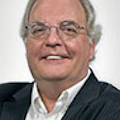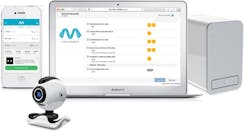Vision system ensures patients obtain correct medications
To ensure patient safety, privacy and security, many hospitals employ hospital information systems that are used to store and track patient data and ensure billing accuracy. Such systems are used by doctors to write e-prescriptions and ensure that hospital staffs identify which patient should receive which medication.
"Despite this," says Carter Dunn, COO of Mint Solutions (Amsterdam, The Netherlands; http://mintsolutions.eu), "many hospitals have no closed-loop check to verify patients are getting the right medication before administration. Indeed, researchers from University of Manchester (Manchester, England;www.manchester.ac.uk) found that across countries, without a closed loop check, 20% of medications are delivered in error."
For this reason, Mint Solutions has developed a complete medication verification system known as MedEye that nurses can use to check if these medications are correct. When integrated with hospital information systems, the MedEye system reduces errors that may occur in drug administration.
In operation, a nurse first scans a patient's wristband ID with a handheld barcode scanner to verify his or her identity. Once successfully identified, the patient's electronic records, and medication prescriptions are displayed on a portable computer located on a drug dispensation cart. MedEye then helps the nurse through the process of verifying the medication.
Non-oral medication like injections can be verified using barcodes or remotely by another nurse. Oral solids are inserted into a drawer located at the bottom of the MedEye scanner.
Interfaced to the computer's USB 2 port, the scanner automatically verifies the drugs. "Because the size, shape, color and surface descriptors of the drugs must all be determined," says Dunn, "a 3D imaging system must be used to perform this task."
Although Dunn was rather reluctant to discuss the exact nature of the OEM products used in the scanner, the company's recently issued patent entitled "Medication identification and verification," No: US 9098900 B2; bit.ly/1WRPS8E) reveals that a structured light scanner coupled with a color camera is used to perform these tasks. This data is then used to generate a point cloud model of the medication that is then compared with a database of drugs that have previously been scanned and manually identified.
"Although the task of scanning and classifying the over 1,000 drugs that may be used by any one hospital is time consuming," says Dunn, "this task only has to be performed once to build a large database." After the point cloud data of unknown drugs is obtained, the size, shape, color and surface descriptors are classified against drug models from the company's own medication database on the host PC.
The complete scanning and classification process takes approximately ten seconds, giving nurses near real-time feedback on the types of medication in the MedEye scanner's tray. During the scan, nurses can use MedEye to verify non-oral solids. The results of the scan are then displayed on the PC's monitor. Color-coded boxes show if pills have been correctly prescribed or are unknown or wrong.
Hospitals typically deploy one MedEye workstation per ten beds. According to Dunn, the Deventer Ziekenhuis teaching hospital (Deventer, Netherlands;www.dz.nl) has decided to install the MedEye systems throughout their facility this year.
Feedback from nurses using MedEye has been positive and errors are caught more often than expected. Last year, a nurse at another Dutch hospital demonstrated MedEye for department heads on a random patient. The nurse scanned four medications, which had been dispensed for a patient, and added an extra, erroneous pill to show how MedEye caught errors. MedEye showed the extra pill was incorrect but so were two others that the nurse had assumed were correct but were, in fact, incorrectly dispensed.
About the Author

Andy Wilson
Founding Editor
Founding editor of Vision Systems Design. Industry authority and author of thousands of technical articles on image processing, machine vision, and computer science.
B.Sc., Warwick University
Tel: 603-891-9115
Fax: 603-891-9297

